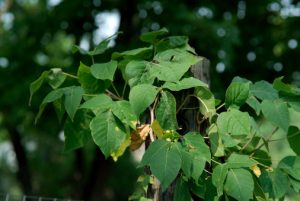
The first step in protecting yourself against poison ivy, poison oak, and poison sumac is learning how these plants look like. “Leaves of three, let them be” is an easy way to spot and steer clear of poison ivy and poison oak, though it’s not 100 percent reliable. Poison sumac, on the other hand, comes in clusters of seven to 13 leaflets.
If you are heading out to areas where these plants grow, be it for pleasure or work, make sure you wear long-sleeved shirt, pants tucked into socks, and gloves. If you use garden tools, ensure they are properly cleaned.
If pets have ventured into wooded areas with these types of plants, put on rubber gloves and wash your pet thoroughly. Although your pet may not develop a reaction, the poisonous urushiol oil can stick to their fur, causing a reaction in you.
If you come into contact with any of these plants, wash your skin with soap under cool water as soon as possible.
If symptoms become present, avoid itching as bacteria beneath your finger nails can lead to infection. Itchiness can be relieved with cool wet compresses as well as over-the-counter ointments or prescribed oral medication.
If a fever ensues, the rash or blisters spread, or pus begins to form, see your doctor right away. Your should also make an appointment with your doctor if the rash does not improve within a few weeks.
Also, read Bel Marra Health’s article: Poison ivy rash affects some people more due to poor handling
Sources:
http://www.fda.gov/ForConsumers/ConsumerUpdates/ucm049342.htm